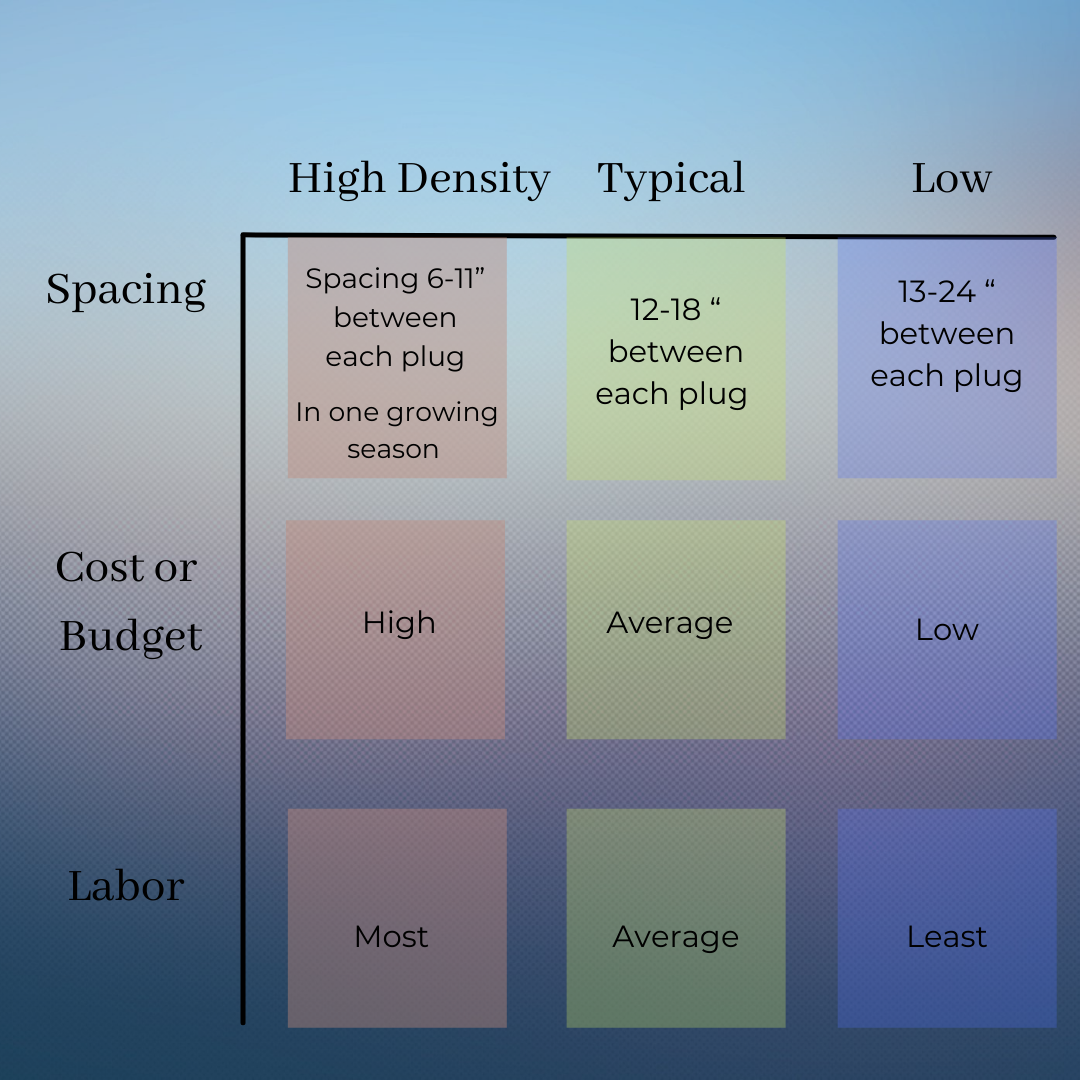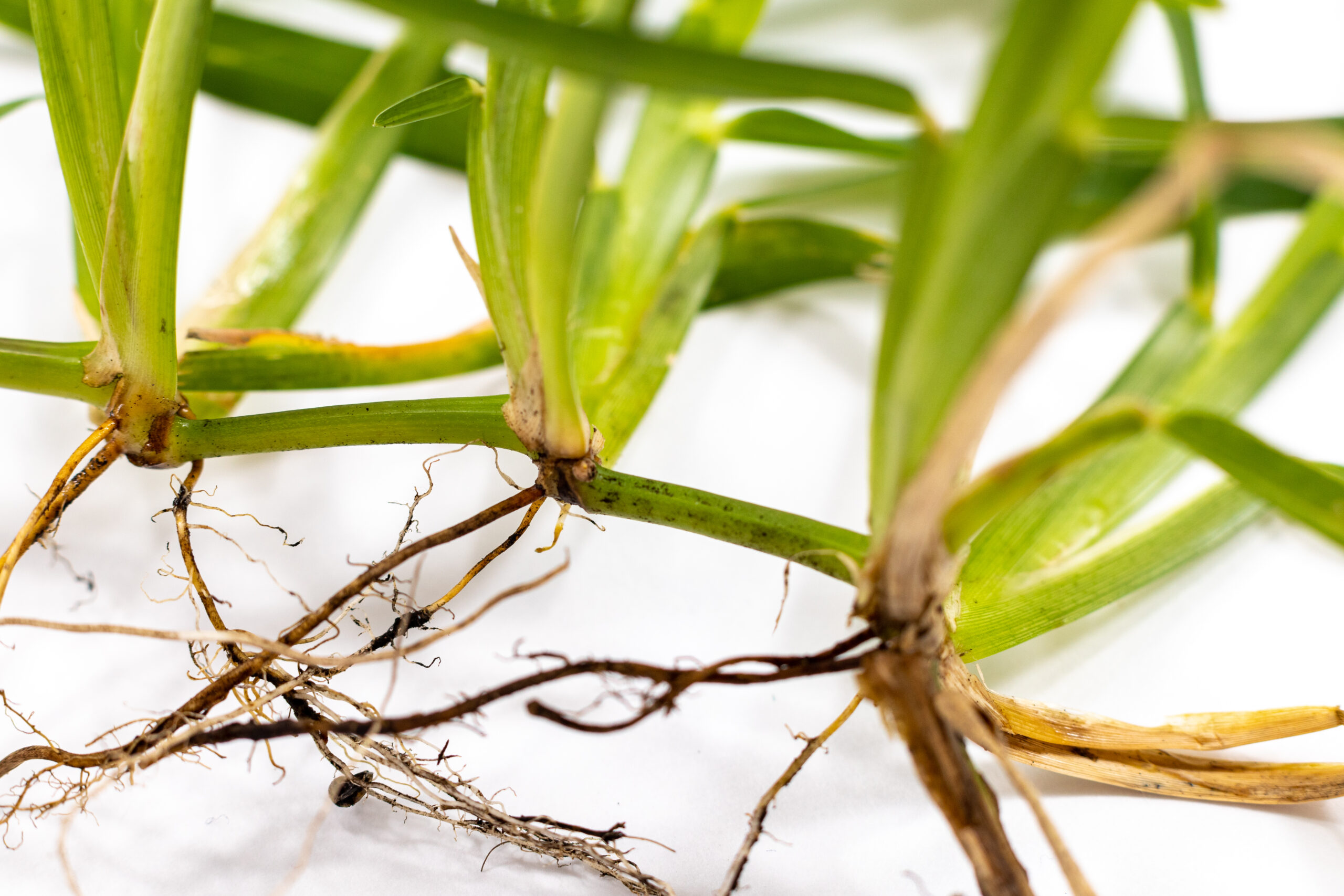A lawn looks different from every blade of grass. The mellow green of the grass is just like a carpet that we walk on with a noiseless tread. Perhaps that’s how you feel about having a lawn covered with beautiful grass.
Guidelines On How To Make Your St Augustine Grass Plugs Grow And Spread Faster:
Get the correct soil, prepare the ground, give attention to fertilizing, watering, weed watch, and the first mowing. St Augustine grass plugs make an excellent lawn from scratch or a filler to thicken your existing lawn.
1 Use The Right Type Of Soil
As mentioned earlier, having the correct type of soil is the foundation for growing healthy St Augustine grass plugs. Soil that best supports the growth and helps a swift, bountiful, and verdant spread.
Better yet, ideal soil conditions will benefit the grass and cause it to thrive in any environmental condition where it’s placed.
To make St Augustine grass plugs grow thicker and spread faster, consider using well-drained and aerated soil, of which the tested pH level will vary between 5.0 and 8.5.
Excellent fertile soil boosts faster and healthier growth with a much-desired bonus of density.
An aerated soil will allow airflow to encourage development and breathe new life into your existing grasses, so supporting your lawn. Either way, you can also use well-drained and sandy loam soil.
Be sure not to use garden soils or topsoils that have already been blended with high organic matter.
That would cause your lawn to deteriorate, and St Augustine grass plugs don’t grow nor spread with any speed when planted In compacted clay soils.
2 Maintain Proper Watering
Addressing the frequency that St Augustine grass plugs should be watered, they require watering daily during the first-week post-installation.
If ever the weather is too hot, water them twice a day for the first 14 days until the roots are firmly established.
Once established and the runners have started spreading, give your attention to the irrigation of your St Augustine grass plugs. Water them up to a half-inch of water.
Now, water them every couple of days. Keep monitoring your turfgrass, and you should adjust the amount of water depending on the environmental conditions. If the weather is too hot, you might either be under watering or overwatering.
Do keep in mind that mistakes in watering are probably the primary cause of the demise of your St Augustine grass plugs.
3 Fertilize Your St Augustine Grass Plugs.
It’s important to note that fertilizer plays a vital role in speeding up the growth and spread of your St Augustine grass plugs.
As mentioned earlier, in the preparation of soil, a starter fertilizer will be used before installing your grass plugs.
Apply Phosphorus fertilizer to stimulate and encourage faster root growth. This will be done for the initial two months.
Then switch and apply a Nitrogen fertilizer to promote faster growth of shoots and spread of runners. The best time to use this mixture is early in the morning when the temperature is cooler.
4 Plant St Augustine Grass Plugs During Summer
To the best of our knowledge, St Augustine grass plugs perform well in hot and tropical climates. They maintain a very good spring green during their times of dormancy.
However, they are at their best – growth-wise – during summer. Hence, it’s much better to establish your lawn in mid-summer, when conditions are excellent for the growth and spread of this beautiful grass.
5 Effectively Control Weeds
Weeds grow in different shapes and sizes, whereas St Augustine’s grass plugs are of a uniform shape and size. The moment you’ve planted your grass plugs, the battle between them and any weeds in the vicinity begins.
It’s so easy not to recognize a weed or two in their early stages of growth. Weeds seem to have a rapid germination process, and they battle with the other plants for the nutrients they need for survival.
If we don’t notice the weeds soon, they might take the nourishent from the earth and, combined with the water and sunlight, they could well prevent your newly planted St Augustine grass plugs from thriving – they could even die.
The whole point of this matter is to kill the weeds before they kill your plants. However, that’s easier said than done. You have to recognise them as weeds first.
It’s part of lawn care maintenance – to effectively identify and destroy any weeds in your lawn and make St Augustine grass plugs spread quickly and grow thicker.
Apply Herbicide (Pre-Emergent)
About five weeks before installing the grass plugs, control the weeds and allow the grass to grow and spread quickly. Pay extra attention to the timing of your herbicide’s instruction.
Always check the label for instructions on the proper moisture of the soil.
Be careful not to damage the grass by applying herbicide.
Be sure the grass will still flourish on your lawn.
It is important to note that you should not apply a herbicide if the temperature is 85 degrees. It can damage your grass.
Manual Removal
First, moisten the soil to make it easier for you to remove the full weed root from the moist soil.
Dig up the roots. You can use a sharp spade to dig to the bottom of the plant and make sure to reach the bottom of the root.
6 Mow High As A Start
The St Augustine grass plugs should be mowed when they reach a height of between 2.5 to 4.0 inches. That’s often enough to avoid cutting more than one-third of the leaf blades so as to encourage fast growth and spread.
This kind of turfgrass spreads through above-ground stems. This turfgrass is prone to injury when mowed too low but can recover easily when injured.
Basically, it takes about 7-14 days for the newly installed St Augustine grass plugs to start spreading and establishing their roots into the soil.
Then after about 6 – 12 months, with the correct care from you, your lawn is lush, verdant and grows in abundance.
Fast Spreading
Overall, St Augustine grass plugs are a fast-spreading turfgrass species. When the roots are well established, the grass will start to grow and spread quickly, especially during the peak growing seasons.
As recommended, always start with a soil test to treat your lawn correctly for optimal development.
The growth rate of St Augustine grass plugs is affected by factors such as the soil type, lawn maintenance, and plant installation time. St Augustine grass plugs grow and spread fast during spring and summer. These are the times that they develop the most.
How To Plant St Augustine Grass Plugs On Your Lawn
1 Choosing The Best Time To Plant St Augustine Grass Plugs.
The late spring or early summer is the best time to plant them. During this time in the southeast, temperatures are above 80℉. However, even if you get a late start into the summer, it is most likely safe to plant the grass plugs.
Should you intend to plant in late summer, first be aware of the estimated winter frost. The St Augustine green plugs need at least 90 days to ‘settle in’ before the first frost.
2 Calculating The Square Footage And The Spacing.
To begin, you’ll need to calculate and examine the lawn area and the space needing plugs. The exact amount of space covered by a tray of St Augustine plugs fluctuates for plant spacing.

Remember that the larger the lawn space, the longer it will take for the grass plugs to grow together and in a more unified manner.
Thus, it’s necessary to have a soil test to determine the soil’s pH level, which is the vital component for the growth of your St Augustine grass plugs.
After knowing the results, adjust the soil as needed. Soil modification is essential for your grass plugs to grow faster and reward you with a good-looking, healthy grass lawn.
3 Preparing The Area.
Properly preparing the soil before installing the grass plugs is necessary. Having the correct type of soil is the foundation for growing healthy St Augustine grass plugs and helping them thrive in any environmental conditions where they’re situated.
Soil plays a vital role in the success of your grass plugs and allows your grass to spread as quickly as possible.
Here are some guides on how to prepare the soil:
Use an all-vegetation herbicide to kill all grass and weeds in the area.
Allow two weeks for the herbicide to evaporate or disperse completely.
Break up the soil. If compacted, then use a tiller and when the soil is loose, use a garden rake.
Remove all dead thatching and plant residue from the area.
Once done with the foliage, plan out your desired planting grid pattern. You’ll find it much easier to flag the placing of St Augustine plugs before digging your lawn.
Working in a diamond pattern for the spacing, see the square footage coverage in the table above.
Prepare the holes for the grass plugs. It will probably be better and easier for you if the gap is more significant than the grass plugs.
Use a garden trowel to dig holes. The hole depth will likely vary based on the amount of root system on the St Augustine grass plugs. Holes will be between 2″ -4″ deep.
Finally, water the area thoroughly – the soil must be saturated. A Lawn Provider Specialist recommends adding a small amount of starter fertilizer to the holes. This is because it helps to develop the root system faster and more efficiently.
4. Plant the St Augustine Grass Plugs.
You are now ready to plant the St Augustine grass plugs.
Depth of Planting
Begin by placing the grass plugs into the holes at ground level. If you find that not all the holes are of a uniform depth, add a small amount of soil to level the grass plugs that are too shallow. Be sure that you cover the roots, not the crown of the grass plug.
Planting the St Augustine grass plugs too deeply might cause the crowns to rot, and that will encourage diseases or insects.
Fill in any space around the grass plugs with soil to secure the safety of the St Augustine grass plugs from any elements that can cause their deaths.
Watering Grass Plugs
Again, water thoroughly and continue watering the St Augustine grass plugs for the next two weeks.
After that, water them once a week. Proper watering management is essential to achieve quicker root and foliage development.
Soon after two weeks, your St Augustine grass plugs are well rooted and, on their way, to spreading. At this time, your grass plugs have started to spread.
Mowing New Grass
Always make sure not to cut the newly plugged area shorter than 2 inches. This kind of grass plug helps to fill in bare and dead spots of your lawn. It responds well to a little care and patience by rewarding you with a beautiful, lush good looking, desirable green lawn.
Now, the area can be mowed as needed.
Here’s a table indicating what variances to expect when using high, typical, and low-density plug planting. Remember, when doing this on a large scale, that the cost and labor will naturally fluctuate hugely depending on the methods you use:
Growth Expectations of St Augustine Grass Plugs

Grass plugs have two uses:
To Repair the damaged areas of a lawn.
Having a small lawn with damage caused by insects, dog, and cat waste, etc. Grass plugs are an ideal way to repair these areas of your lawn.
First, you have to address the causes of the damage and apply the necessary treatment.
Then, installing the grass plug is the quickest and easiest way to return it back to a lushly good-looking grass lawn.
To Establish a lawn whenever sod or seed is not available.
This kind of grass plug is an alternative to use whenever sodding or to seed a lawn isn’t possible.
Most likely, the grass variety you want is not grown on a sod farm.
The type of grass you wanted is not available as a seed.
They don’t produce enough viable seeds for commercialization.
Some grasses are grown as sod or plug only.
Ways To Make Your St Augustine Grass Plugs Grow Stronger And Faster
St Augustine Grass Plugs are Turfgrass having two to three clumps of grass and roots. Once planted, these grass plugs spread and are an excellent choice for thin or bare spots on your lawn.
Versatility
Because of its versatility and ability to thrive in fluctuating climates, the St Augustine grass plug is top-rated. This kind of grass plug demonstrates superior shade, cold, frost, heat, and drought tolerance.
If you like a thicker grass blade and a blue-green colored lawn, St Augustine grass plugs may be the best choice for you.
We’ve put together some tips and guidelines to help you understand and learn how St Augustine grass plugs spread quickly and form a thick cover for your beautiful lawn.
Characteristics of St Augustine Grass Plugs
It fills your lawn in about 6-12 months and has a distinct characteristic that performs differently in various environments.
It ensures high tolerance to heat, shade, and colt & frost.
It has a thick flat blade that’s fine in texture, with lush green color.
It doesn’t have rhizomes. St Augustine grass plugs are a stoloniferous species that root at the nodes.
It also thrives in irrigated areas having good drainage.
It is highly tolerant of soil salinity and salty sods.
It grows in a wide range of soil types with a ph level that ranges from 5.0-8.5.
It performs better in the shade than other warm-season turfgrasses.
In comparison to other grasses, it holds its color well in drought conditions.
It possesses a dense growth that congests and chokes any weeds.
It can tolerate moderate foot traffic and can quickly recover when injured.
It possesses a good spring green color – even during dormancy.
It performs well in hot and tropical climates.
It’s equally ideal for both commercial and residential purposes.
Its mow height is 1.5 – 2.5 inches
Its blade width is 8-9 mm
It’s commonly planted in pastures and on ranches.
Reproduction of St Augustine grass – Stolons, Plugs or Sods
It multiplies so that each vertical blade of grass puts out little horizontal shoots just above the ground’s surface. These shoots then root themselves into the ground creating a second and third blade of grass, and so on – they are called stolons.
By this method alone, the single blade of grass you started with might multiply itself several hundred times, or more, as it reproduces itself across your lawn. Growing this way also makes your lawn look more lush and healthy.
St Augustine grass species regularly spread even when in use (i.e., being walked upon) and while not filled in. It’s established with the repetitive use of sods, plugs, or stolons.
Green plugs are individual turf plants that are grown in a tray. Their sizes vary, which measures between 1.5 – 3 inches in length. They will continue to spread and fill in over a period of time. Thus, creating a solid ground cover of your preferred grass type.
Origin of St Augustine grass
In Australia, it’s known as Buffalo Turf, and in South Africa, it’s called Buffalo Grass. This kind of turfgrass is a warm-season lawn grass popular in tropical regions—further, a type of grass from medium to high maintenance that forms a thick, carpet-like sod.
St Augustine grass is a versatile, multipurpose turfgrass that adapts well to a wide range of climate and soil conditions. Hence, this makes it the ideal choice for either residential or commercial use. It’s one of the most popular types of warm-season turfgrasses.
Final Thoughts
Hopefully, this guide will help you with all the information you need to know about your St Augustine grass plugs. You know the right and wrong things to do to improve growth and development and the proper maintenance of your grasses and lawn.
With St Augustine, you get the best of both worlds, so get passionate about everything lush and green – we are.
Jenny Marie
Tribal Writer
Edited By
Patricia Godwin

